This entry describes two references to transistorized versions of Grey Walter's tortoises.
The second reference refers to people and organisations mentioned in another post on W. Grey Walter and Edmund C. Berkeley .
1957
Jan 25 [WGW response to letter.]
The main difficulty is in the mechanical assembly, particularly the gearbox which has to be completely free from seizing and jumping even under the most adverse conditions. I have not found Meccano gears adequate since they absorb too much power from the rather small and inefficient motors which are available in this class.
The models we have for demonstration within our own laboratory are made with specially cut low loss gears.
I rigged one up with a transistor amplifier but there was no great advantage in this since the current required to run the motors was a hundred times greater than that needed for the filaments of the valves, though obviously this is no disadvantage.”
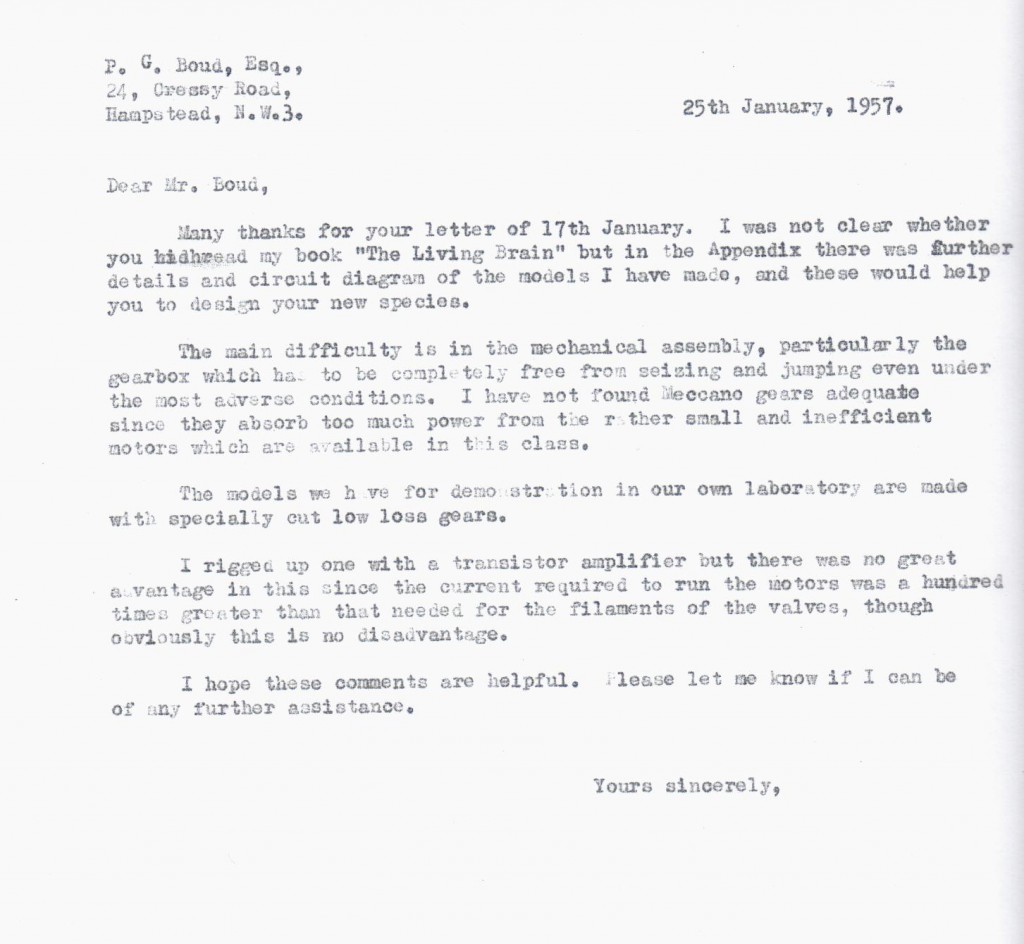
1960
Jun 22. Hy Ruchlis {V-P of SMC} to WGW.
Nov 14. Hy Ruchlis {V-P of SMC} to WGW.
“Mr [Alfred] Bender [of SMC] succeeded in getting the robot to work by replacing the vacuum tube circuit with transistors. His circuit diagram is enclosed [not found in Berkeley archive, but in British Museum Burden archive-RH]. Under separate cover we are returning the robot with Mr. Bender’s changes. It works well, except for excessive vibration of one motor that effects the operation of the relay. I am quite sure that a new motor would solve this problem. In my opinion the practicality of the project hinges on the possibility of reducing the weight of the device. This would greatly reduce the size of the required motors and battery.
We should also consider replacing the storage battery with 110 Volt AC. This solves many problems. The very expensive battery would be eliminated. A simple rectifier circuit could supply current for the transistors. With this arrangement the cost of the robot would begin to approach a realistic level, and sales potential would be greatly increased. Additional advantages would be the elimination of the nuisance of frequent charging of the battery, and more consistent operation. The only disadvantage would be the fact that a wire would have to be attached to an outlet. This reduces to some extent the dramatic impact of the device. However, its use in schools for teaching the principles of reflex action would not be seriously affected.
The use of AC solves so many problems that I believe we should proceed to a new model on that basis. It may prove possible to introduce new kinds of circuits to illustrate conditioned reflex and perhaps other psychological principles, at a lower cost than for a battery operated model without such circuits. As arranged, I will wait on a new model from you before undertaking further development of the robot.”
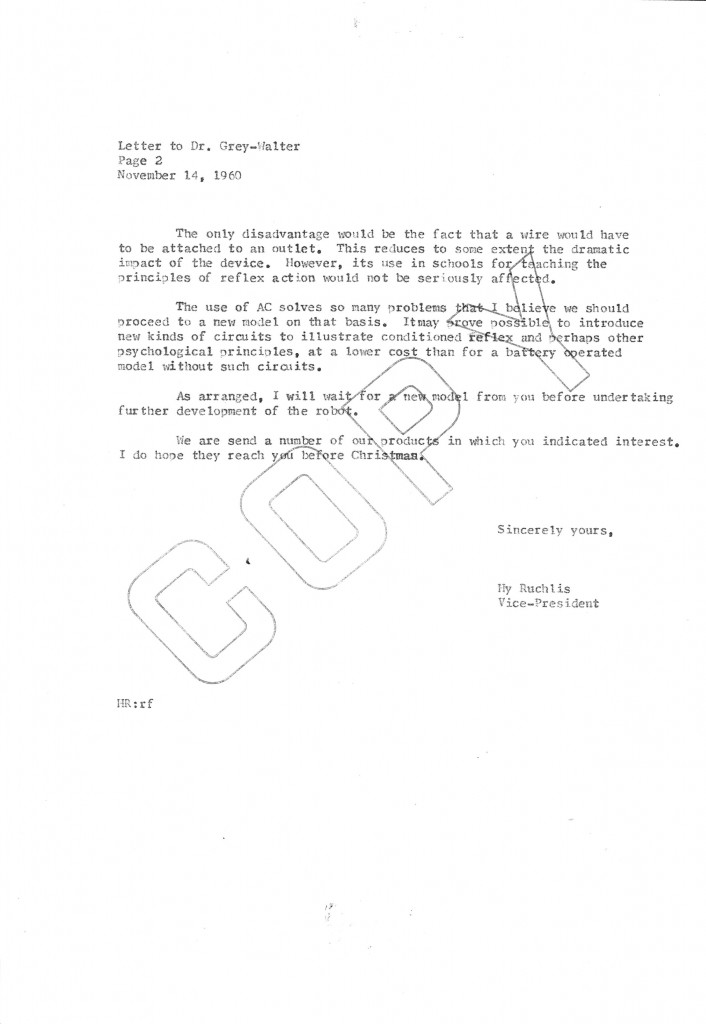
Author's Notes:
- The AB initial in the circuit diagram is Alfred Bender. Like most of Berkeley's associates, they operate independently and are engaged for specific projects. Alfred Bender was an American Science teacher often engaged in scientific or electronic projects.
- Berkeley's own cybernetic model – Squee , originally worked off batteries, but power consumption kept demonstration time to 15 minutes, with a 15? hour re-charge time inbetween. Not very practical in terms of availability for viewing demonstrations and the like.
- Possibly taking away the very things that gave the "artificial animal" an illusion of life , its autonomy, was also a contributing factor to the deal not being finalised.
- It is not known if the modified tortoise was returned or not. It is considered as missing.
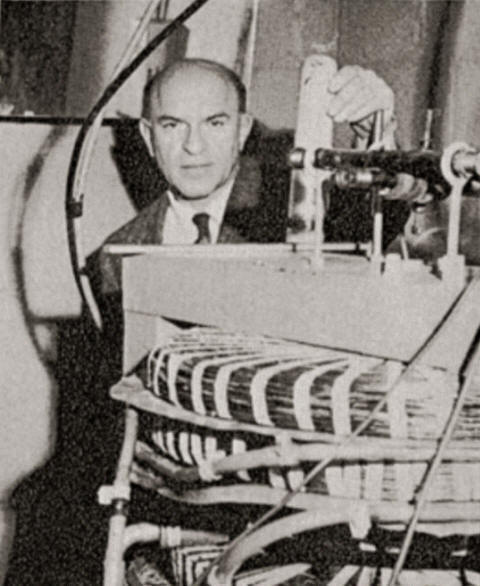
(above) Photo of Alfred Bender with a cyclotron.
Nov 28 [VW to ECB]
“…..He [Grey] will be most interested to hear of your recent work on the Tortoises, and he is eager for Mr. Warren (of the BNI) to see the transistorised tortoise which Mr. Ruchlis is working on, & I believe sending over here. If you are interested in
“Cora”‘Neurisa’ [sic] the nerve which Grey had invented & used for lecturing he can let you have any information you require. …..”
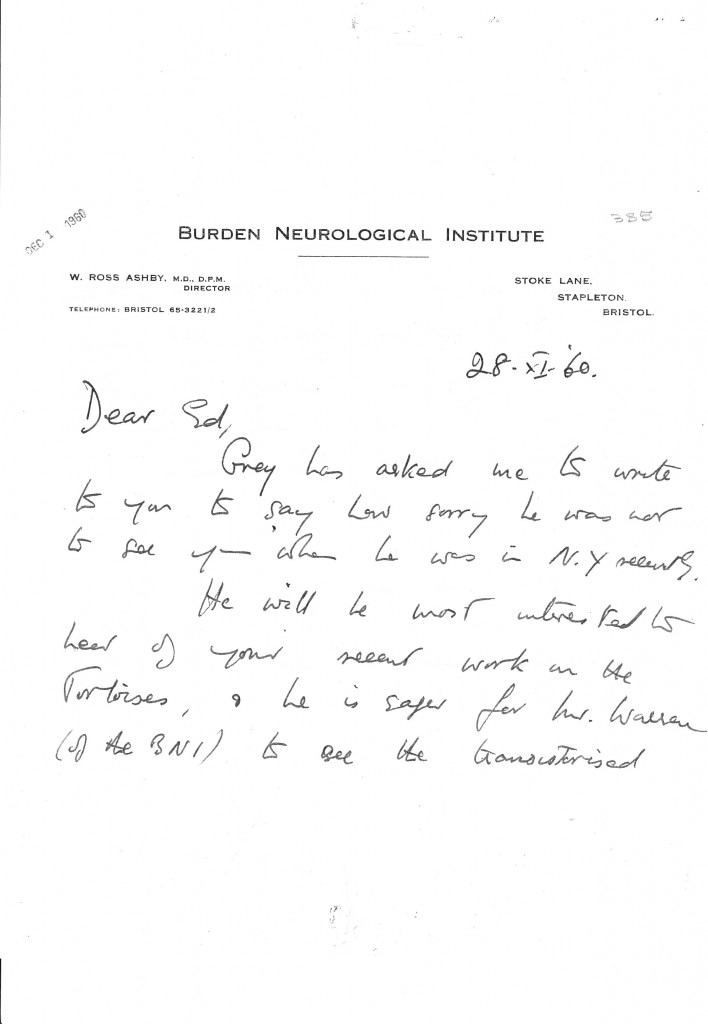

Science Materials Center advert, Computers and Automation, June 1961.
See other Grey Walter and his Tortoises posts here.
See other Cybernetic Creatures here.
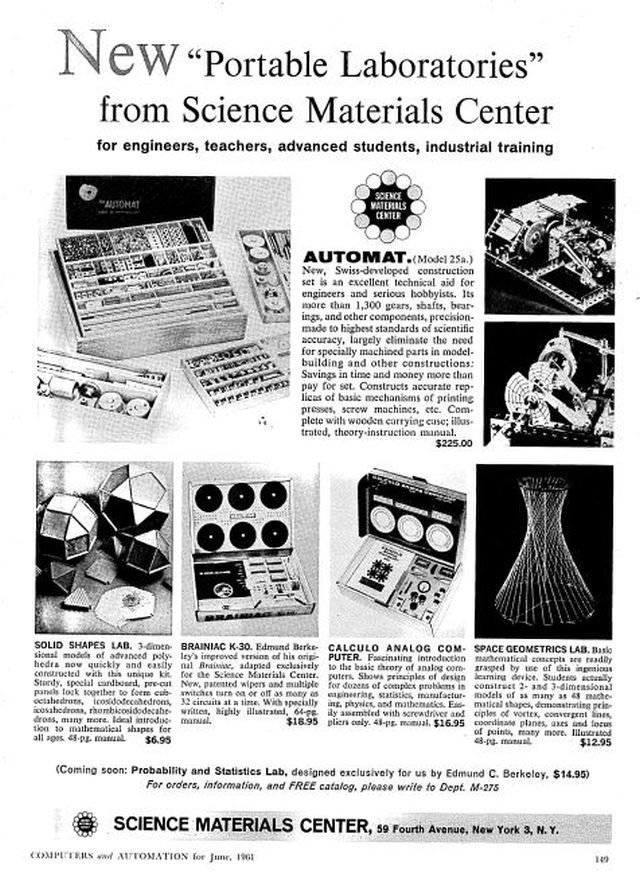
Thanks Bobby – I’ve made the change. – Reuben.
Looking at the letter, it appears to me that in “… Tortoises, and he is xxxx? for Mr. Warren …” xxxx? is the word “eager”
-Bobby